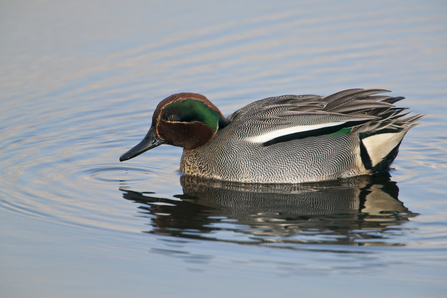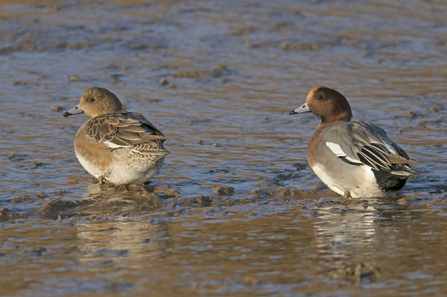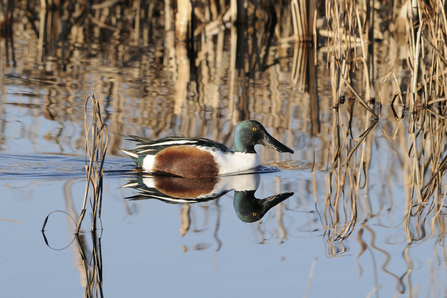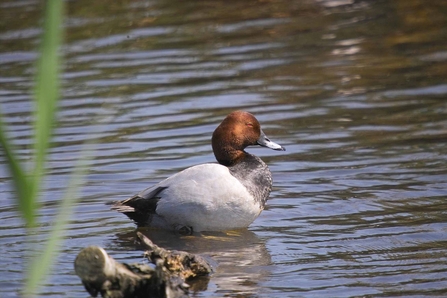Despite the cold temperatures and nights drawing in quickly, winter can be a truly wondrous season. Landscapes become dusted in glistening frosts and starling murmurations sweep the skies with their spectacular changing patterns. It’s also time when wetlands become busy with noisy flocks of wintering wildfowl including ducks, geese and swans that have escaped the harsh winter weather of their breeding ground further north.
Teal
The teal is our smallest, dabbling duck in the UK that can be spotted gathering in large numbers during winter on most reservoirs, wetlands and flooded gravel pits. The males have a chestnut-coloured head, bright green eye patches and a speckled grey breast. The females have mostly mottled brown feathers, but have a bright green wing patch that can be spotted in flight.

(c) Guy Edwards 2020/VISION / Teal
Wigeon
Wigeons are common dabbling ducks, although most of the birds visit the UK in winter all the way from Iceland, Scandinavia and Russia. They can normally be seen in close-knit groups, feeding on the surface of the water on aquatic plants and seeds. They gather on wet grassland, flooded gravel pits and reservoirs close to sloping edges where they can easily get out of the water onto the grass banks. They are a stocky, short-necked duck. The male easily recognizable with a chestnut coloured head with a creamy yellow forehead and crown. The female looks similar to a female mallard with mottled brown or grey feathers. Wigeons are a noisy species, the males have a piercing whistle whilst the female has more of a throat-clearing growl.

(c) Chris Gomersall / Wigeon
Shoveler
It’s easy to guess where this bird gets its name from! They have a distinctive large shovel-like bill that they use to sweep back and forth through the water to catch small invertebrates and aquatic plants. They breed in small numbers across southern and eastern England as well as Scotland too, but become more widespread throughout the country during winter. The males have dark green heads with a white breast and orangey-brown sides whereas the females are mottled brown with a pale blue forewing. However, when breeding season is over, the male shovelers moult their colourful feathers into a mottled brown colour. This is to help keep them camouflaged to avoid predators.

(c) Nick Upton 2020/VISION / Shoveler
Pochard
48,000 birds visit from northern and eastern Europe to wetlands and larger lakes in the UK during winter. They can be distinguished by their bright reddish-brown head, black chest and grey body. The female being a darker, duller grey-brown. Just like the shoveler duck, the male pochard moult their feathers when breeding season is over, this is called an ‘eclipse’ plumage, which is a mottled grey-brown to help them become more camouflaged. They are a diving duck, feeding on mostly aquatic plants, snails and invertebrates underwater.

(c) Derek Moore / Pochard
Keep an eye out for flocks of wintering wildfowl amongst the reeds and grass islands at our Derbyshire Wildlife Trust nature reserves including Willington Wetlands, Hilton Gravel Pits, The Avenue Washlands and Wyver Lane. Some of our reserves have hides and viewing platforms where you can watch the birds at a distance. So don't forget your binoculars!
